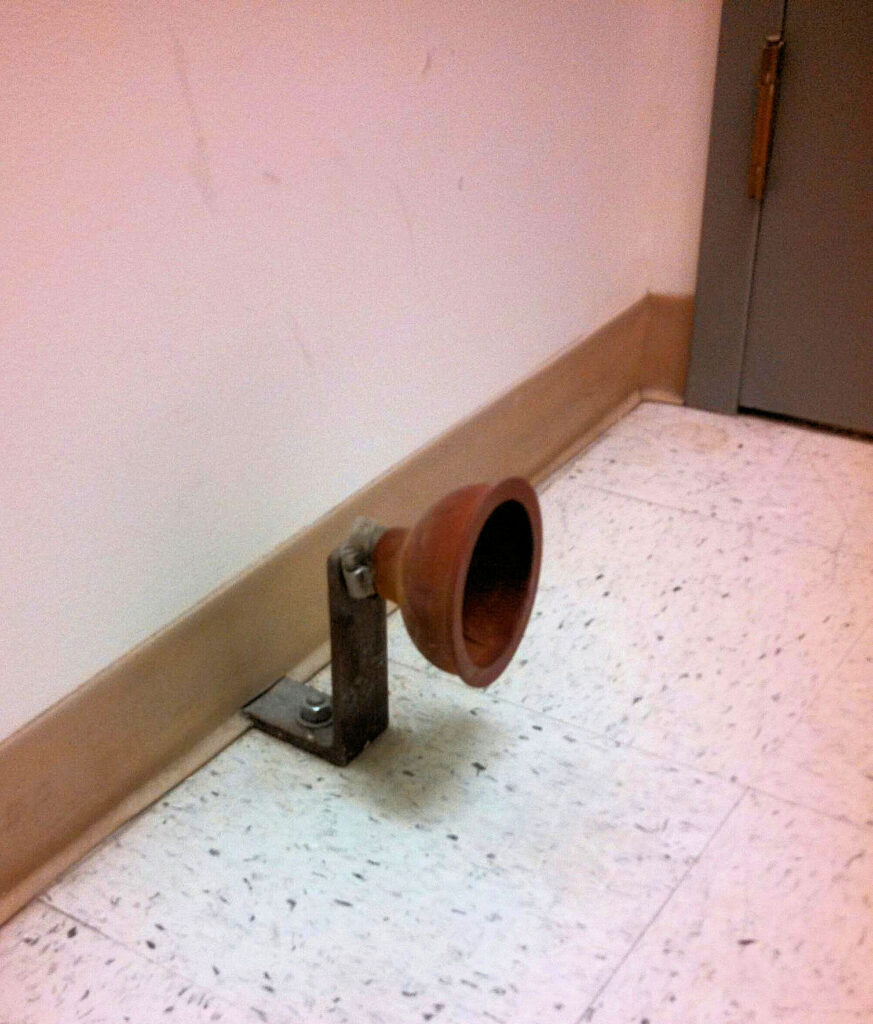 For today’s Fixed-it Friday photo, I am updating an old post from almost 10 years ago. This week I have received several questions about holding open and locking doors in schools – I answered one of those questions yesterday. Although Fixed-it Friday photos are often humorous, this post addresses an important and serious topic.
For today’s Fixed-it Friday photo, I am updating an old post from almost 10 years ago. This week I have received several questions about holding open and locking doors in schools – I answered one of those questions yesterday. Although Fixed-it Friday photos are often humorous, this post addresses an important and serious topic.
Here’s what I wrote in the original post:
The photo was sent by John Emry, and when I originally saw it, I thought about the “why” behind the creative modification. This improvised hold-open device has been retrofitted on all of the stair doors in this particular school. Presumably, the teacher leads her line of students down the corridor, pushes the door open until the plunger engages, and the group of students passes through the opening before the door closes. Ingenious! Except that it isn’t listed for use on a fire door.
There is already a product in existence that will perform this function, without the expense of electronics – a delayed action door closer. The delayed action feature, which has to be part of the original closer and can’t be retrofitted without changing the closer body, is a very inexpensive solution. It will hold the door open for up to a minute (or two, depending on the product), by restricting the fluid flow for a short time. The delay only engages when the door is opened to the fully-open position, so under normal use there would not be a delay in the closing cycle. But when the teacher pushes the door all the way open, he or she will have a minute or so to move the students through the door. This would make it easier for the kids to pass through the opening, and would also save wear and tear on the door, frame, and hardware (have you ever seen a group of middle schoolers make their way to gym class?).
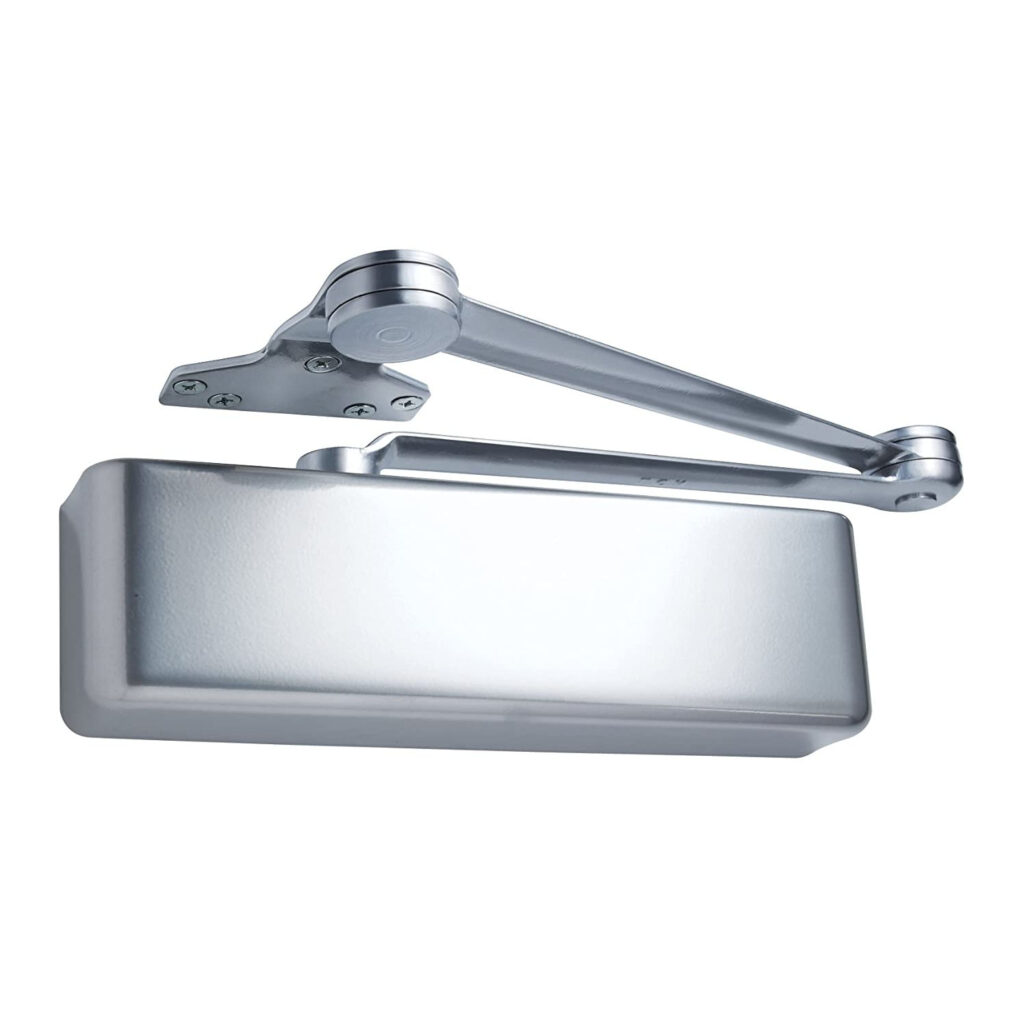 At that time, the model codes and referenced standards did not address whether a delayed action closer could be installed on a fire door, but a clarification was added to the 2018 International Building Code (IBC):
At that time, the model codes and referenced standards did not address whether a delayed action closer could be installed on a fire door, but a clarification was added to the 2018 International Building Code (IBC):
716.2.6.5 Delayed-action closers. Doors required to be self-closing and not required to be automatic closing shall be permitted to be equipped with delayed-action closers.
This paragraph is found in Section 716 – Opening Protectives, which means that delayed-action closers CAN be used on fire door assemblies. Note that this added section does not include a specific limit on the amount of time that the closing cycle can be delayed. On doors in schools and other facilities where it’s beneficial to have a door held open for a minute or two, delayed action closers seem like a good solution to me. This would help reduce the temptation to prop doors open with wedges.
What do you think? WWYD?
You need to login or register to bookmark/favorite this content.

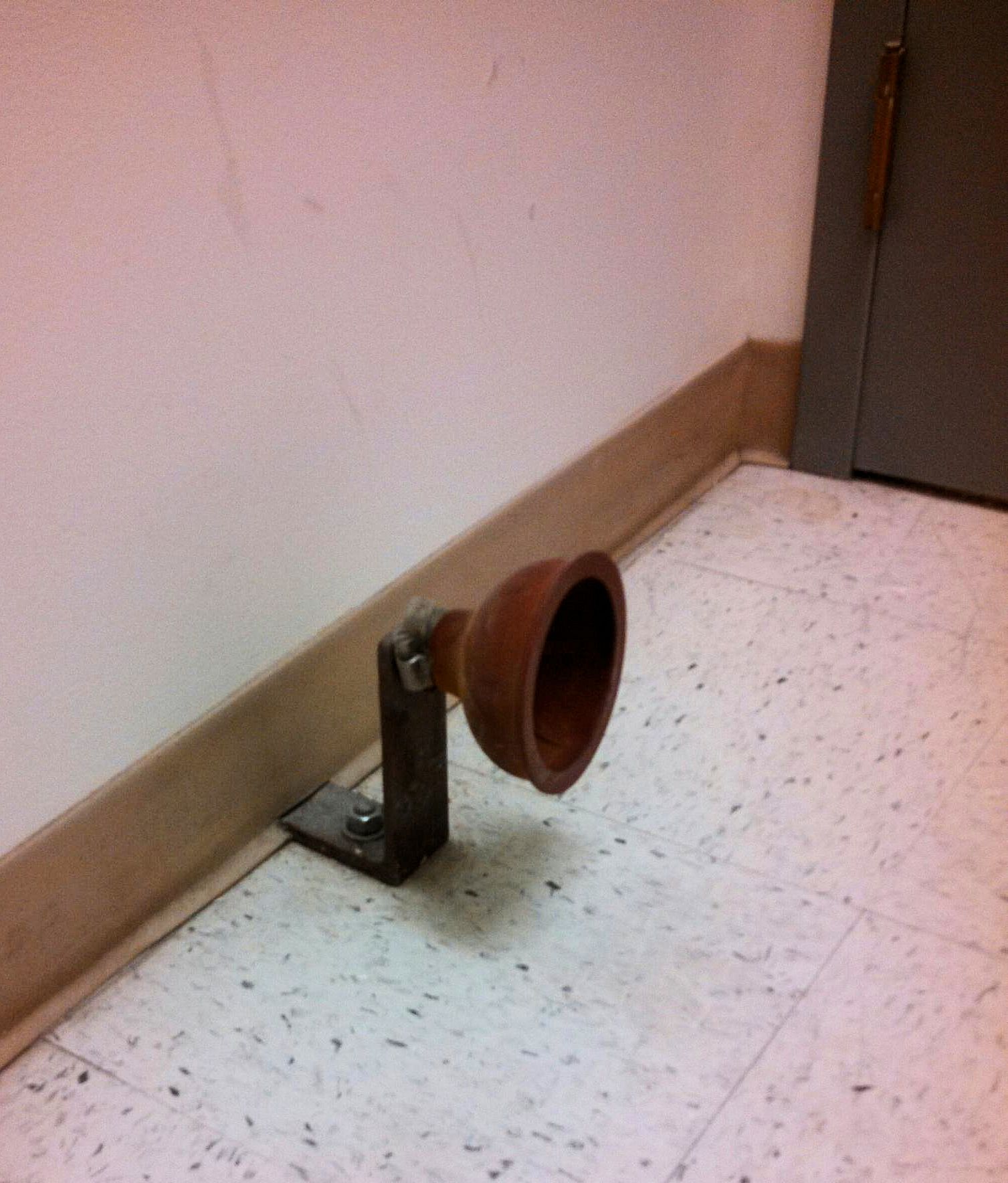
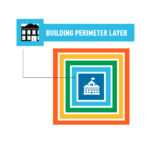

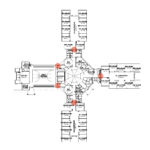





Of course, there’s always a “but what if…”. Scenario: teachers are leading their students through a fire door being held in delay mode “for a minute or two”, all the people have finished moving through the opening, and then the fire alarm sounds. We need that door closed within 10 seconds, but the clock’s still running with the delay valve. Delayed action is a valuable feature, but IMO we need to stipulate delayed action “hang time” at no more than 10 seconds. The door will still creep while the procession’s in progress, but people can manually push the door back as they move. A better solution, but of course more expensive, is something like LCN’s HSA-featured closers with their integral people sensors.
In any case, “Wedges kill! Death to wedges!”
I find it interesting that there is a minimum closing time for doors (ADA), but no maximum closing time. Is that something we should try to get added to the codes, at least for fire doors?
Hi Joe –
When we (BHMA) proposed the change to allow delayed action closers on fire doors, we included a time limit. I can’t remember whether it was 1 minute or 2. The technical committee suggested removal of the time limit.
– Lori
Somewhere a toilet is in need of a plunger
Ingenious solution but not code compliant
You are correct! 🙂
– Lori
One of the joys of this blog is the limitless creativity of people to devise creative (maybe Rube Goldbergian) solutions. I like your speculation on the reason for this creative “stopper”.(or is it the UN – stopper?)